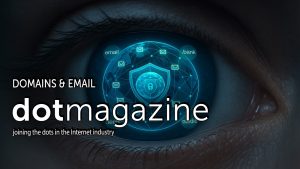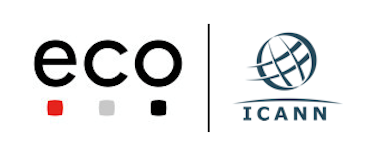What happens when the inbox becomes a frontline? When your domain name becomes a vulnerability? When cyber defense demands allies, not just tools? This isn’t just about IT anymore. Digital infrastructure has become a boardroom imperative. In today’s volatile landscape, an organisation’s survival and competitive edge hinge on trust, resilience, and strategic control. These aren’t abstract concepts; they start with the fundamentals: secure communication, domain-level autonomy, and collaborative threat mitigation.
In this issue of dotmagazine, we examine how forward-thinking companies and infrastructure leaders are preparing for what’s next – not with more complexity, but with sharper focus.
Communication: The email imperative
Our deep dive into future-proofing begins with communication, specifically the enduring, yet increasingly vulnerable, cornerstone of professional interaction: email. Email remains the most ubiquitous – and most targeted – form of digital communication. As Prof. Dr. Norbert Pohlmann of eco outlines, it is still the bedrock of professional interaction. Yet nearly half of all incoming emails are now unwanted or potentially malicious.
The solution, as Sandra Schubert of the eco Certified Senders Alliance (CSA) argues, lies in standardised protocols like SPF, DKIM, and DMARC. These are not optional add-ons – they are essential to preserving the integrity of your brand and your communications infrastructure. However, implementing these solutions might look complex. Many organisations lack a unified approach, hindered by siloed departments or outdated DNS configurations, underscoring that secure messaging has become a strategic necessity, not just an IT concern.
Looking ahead, Gherardo Varani of Freename.io expands on this by exploring how decentralised domain systems can strengthen brand identity and digital resilience in a hybrid threat landscape.
Control: Owning the digital future
While secure email communication is foundational, it’s just one piece of the puzzle. Beyond how we communicate, the very identity and control of our digital presence – our domain – is equally critical. As we move toward the next ICANN application window in 2026, the conversation around top-level domains (TLDs) is evolving from vanity projects to infrastructure strategy. A domain is more than a name – it is a gateway to autonomy. In a digital economy where platform rules shift overnight, owning your namespace isn’t just about independence – it’s about ensuring long-term viability.
Articles from DomainCrawler and others demonstrate how data-driven decisions, not assumptions, must guide new TLD launches. Rickard Vikström of DomainCrawler details how TLD operators can use real-time market insights to mitigate risk and tailor launches to real demand.
Meanwhile, Katrin Ohlmer of DOTZON outlines how owning your own TLD isn’t just about branding, but about securing a self-governed infrastructure – reducing reliance on third parties and reinforcing the integrity of your digital presence.
Collaboration: The new cyber defense
While securing your own digital footprint through TLD ownership is vital, cyber threats are growing too complex for any single entity to tackle alone. This reality underscores the urgent need for shared defense and active collaboration. The recent Abuse Workshop at Nordic Domain Days, detailed by Thomas Rickert of eco, highlights how stakeholders are finally breaking down silos. Registrars, registries, and hosting providers are now coordinating on shared standards, AI-driven reporting, and joint legal frameworks through initiatives like the Internet Infrastructure Forum.
Standardised abuse formats such as XARF, AI-based report parsing, and the call for a centralised coordination hub all point to one conclusion: resilience depends on trust-based cooperation. As Klaus Landefeld of eco reflects in his 30-year retrospective, today’s digital leaders must prioritise open frameworks and industry alignment just as much as bandwidth or latency.
The bottom line
Today’s digital leaders must prioritise open frameworks and industry alignment just as much as bandwidth or latency. Every article in this issue drives home the same point: the digital systems underpinning our businesses, governance, and social trust are only as strong as the strategies supporting them. This means strengthening communication through robust email security, regaining control through DNS autonomy, and building systemic resilience through cross-sector collaboration.
The call to action is clear: assess your current posture, invest in trusted frameworks, and actively engage in the conversations shaping our digital future. These aren’t just best practices; they are business imperatives.




